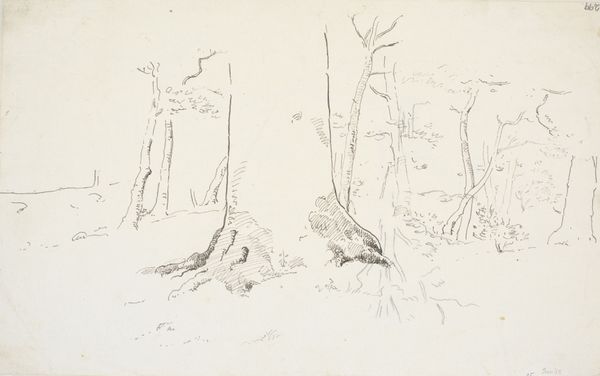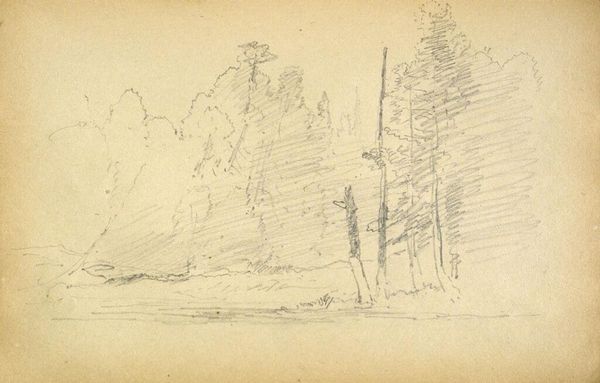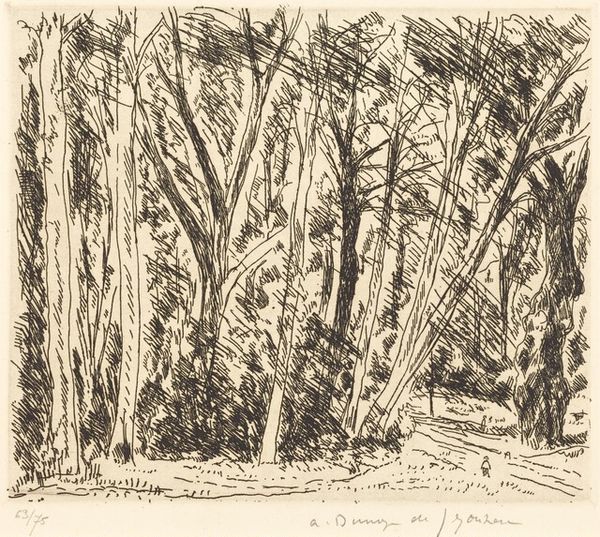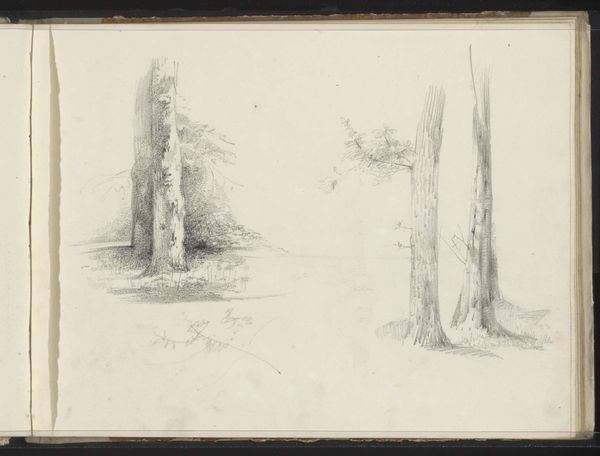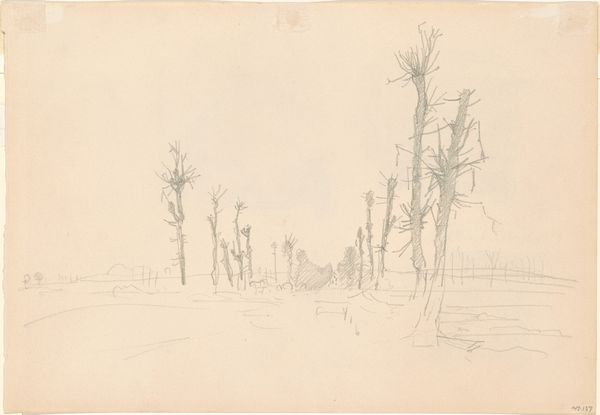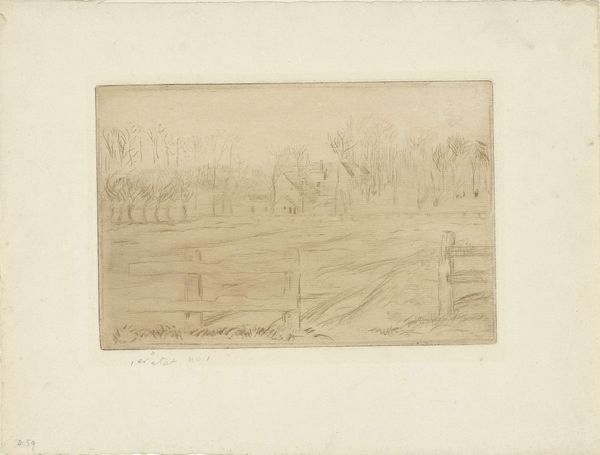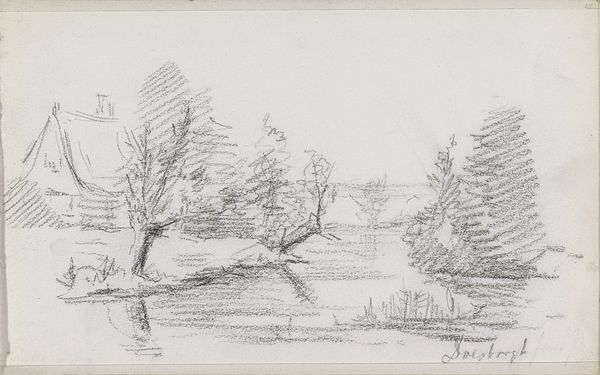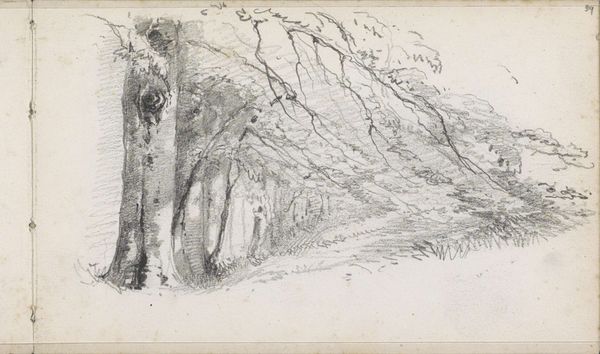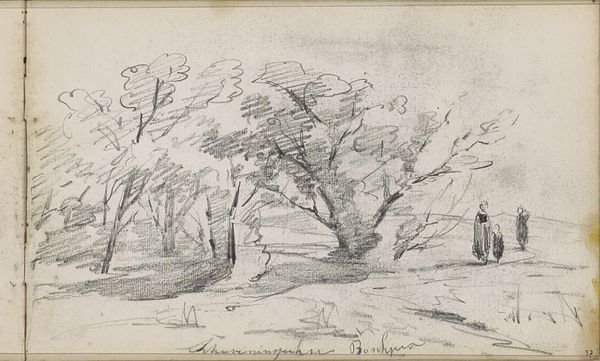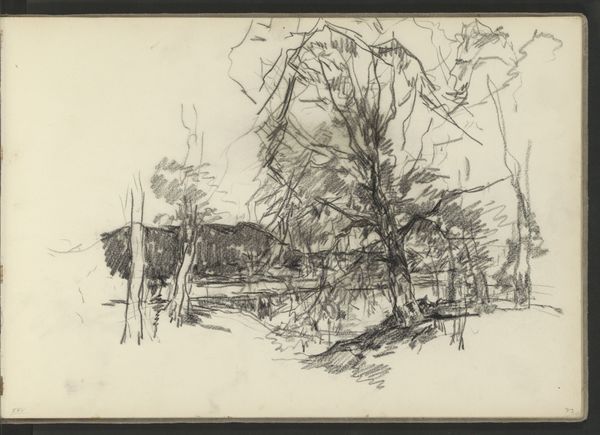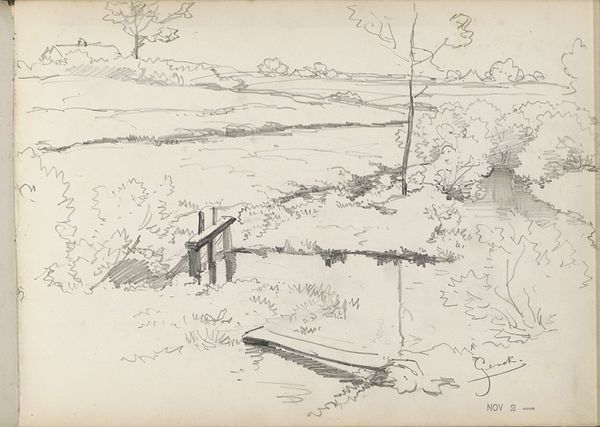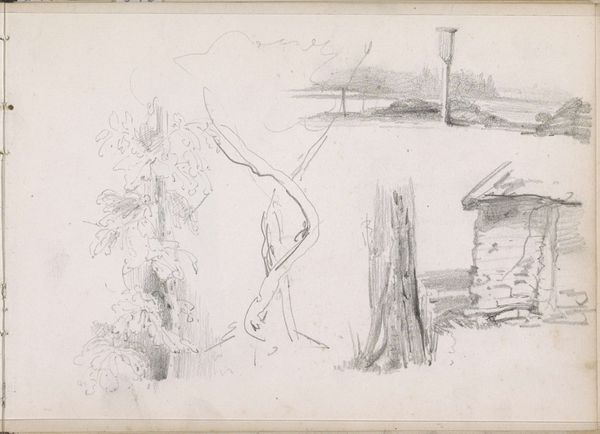
drawing, print, pencil
#
drawing
# print
#
impressionism
#
pen sketch
#
pencil sketch
#
landscape
#
pencil
Copyright: National Gallery of Art: CC0 1.0
Editor: This drawing, "Trees" by Andre Dunoyer de Segonzac, appears to be a pencil sketch. There's a starkness to it, with bare trees creating a dense, almost claustrophobic space. What draws your eye when you look at it? Curator: The process of its creation. You say 'pencil sketch,' but look closer. What kind of pencil do you think the artist used? Was it mass-produced, or handmade? How does the quality of the material impact the line and texture we see? Segonzac's mark-making reveals a deep engagement with the physical properties of the graphite and paper. It becomes a record of his labor. Editor: That's interesting. I hadn't really considered the pencil itself. I was just seeing the image it created. So, are you suggesting that the *means* of production—the specific tools used—are key to understanding this work? Curator: Precisely. Consider the economic context. What was the availability and cost of these materials at the time? Pencil wasn't always ubiquitous. This piece invites us to question traditional hierarchies between drawing and finished artwork, between the preparatory and the complete. The sketch can stand alone because of the material relationship enacted in its creation. Editor: So, it's about valuing the labor and the materials themselves, not just the final image or artistic intent? It's a more democratic approach to appreciating art. Curator: Indeed. By focusing on the material reality, we challenge established notions of artistic genius and shift the focus to the physical, social and economic circumstances surrounding its making. Editor: I never thought of it that way before, seeing the labor in a seemingly simple sketch. Thanks! Curator: And you have given me a reason to remember the important lesson the materiality carries within every work of art!
Comments
No comments
Be the first to comment and join the conversation on the ultimate creative platform.
